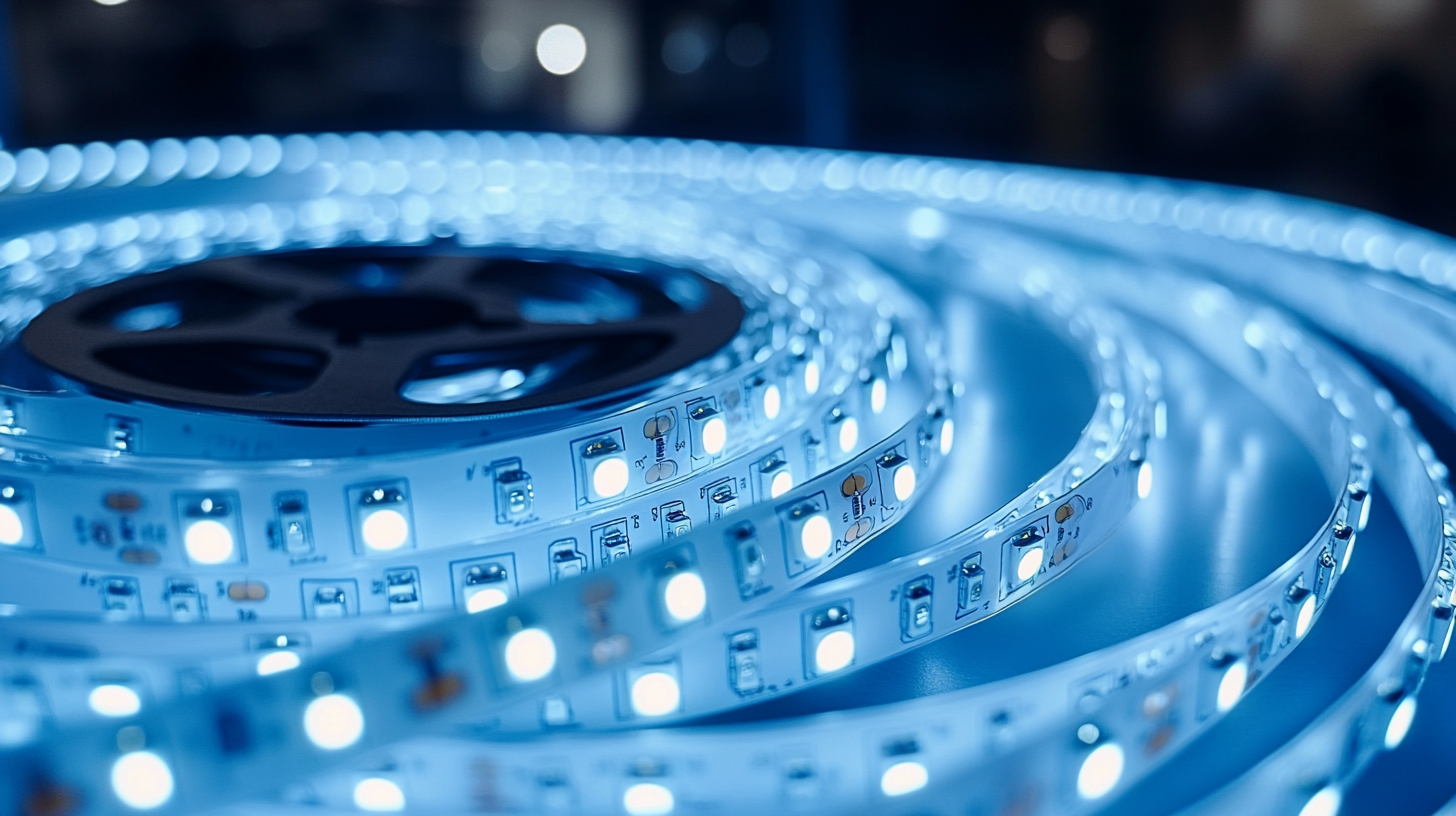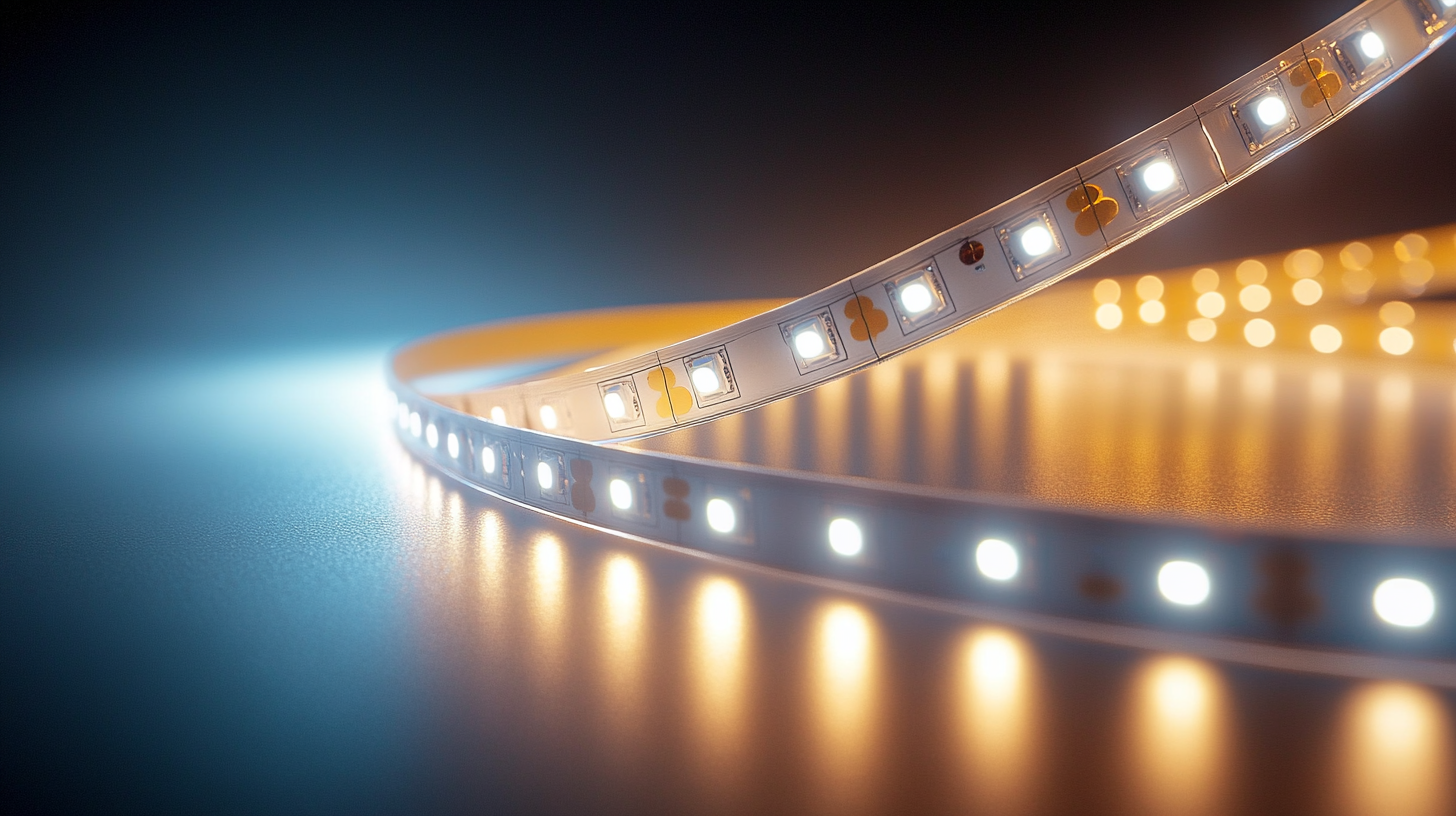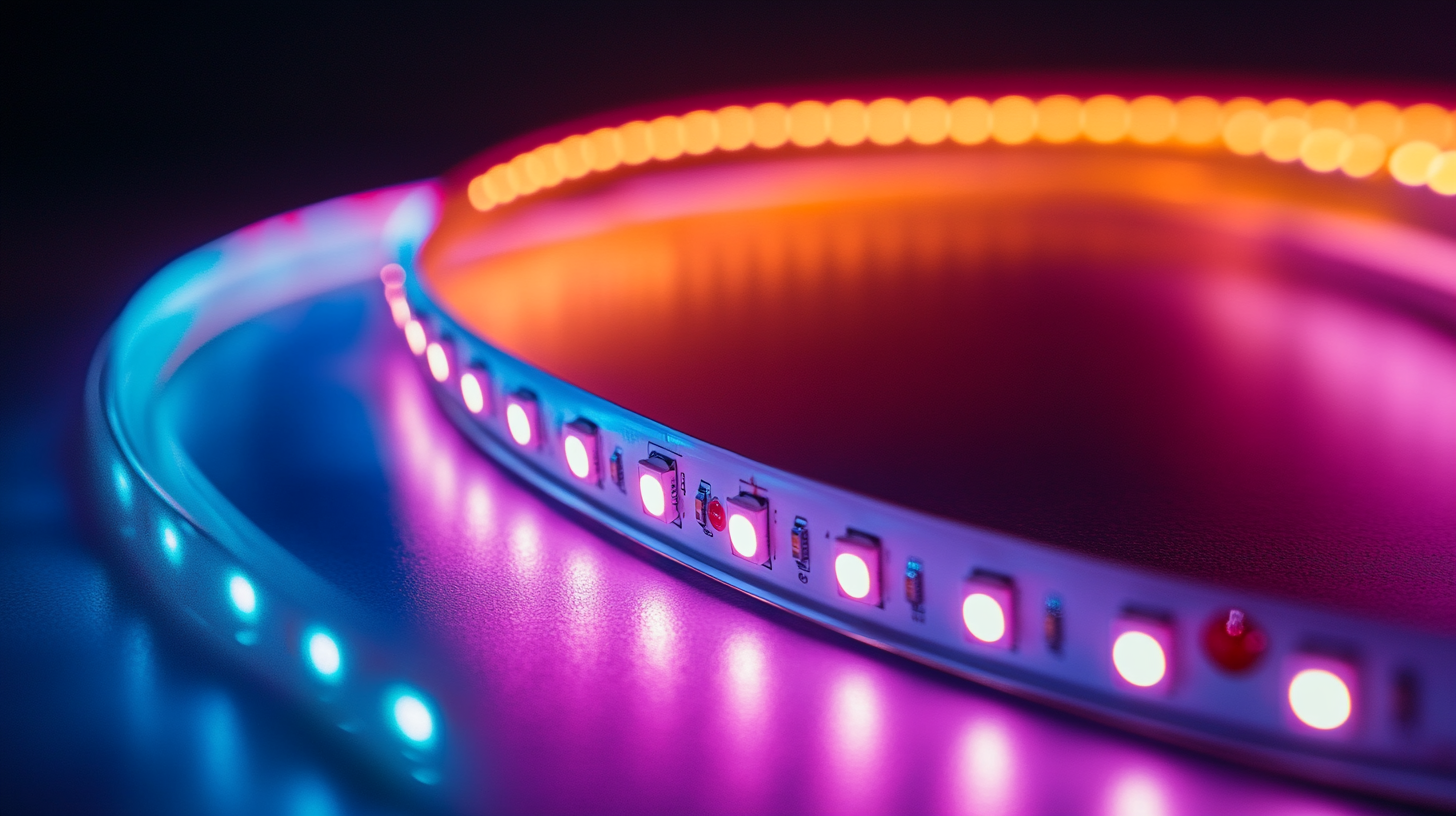Maximizing Value with Led Strip Lights Through Effective Maintenance and Care Techniques
Looking back in the recent past, LED strip lighting has adopted revolution in the way we illuminate our spaces, and promises to be beautiful as an energy-efficient alternative. According to a report by the U.S. Department of Energy, the adoption of LED lighting can lead to over $250 billion projected energy savings between 2020 and 2030. This is consistent with the statement highlighting growing popularity among the general public about how these LED strip lights consume energy at home and offices alike. However, an effective maintenance technique needs to be handy for purposes of maximization.
Proper maintenance of LED strip lights is essential for maximizing their lifespan and performance. Studies have found that such lights can last between 15 to 25 times longer compared to incandescent ones, but how well it can be maintained and installed greatly depends on factors like heat management. Proper care approaches help a user to improve the lifespan and efficiency of an LED strip light, so that it can experience maximum value with all possibilities of creative application that light provides.

Understanding the Basics of LED Strip Lights: Types and Applications
Its luminosity makes it a dual-purpose item suitable for residential and commercial applications. Understanding every detail on types and functions stands in good stead to profit the most out of LED strip lights. Several types of LED strips like standard, waterproof, and RGB strips adorn the modified spectrum based on environment and application concerns. The first consists of runs of unidirectional LED light output primarily for indoor work for ambient lighting for living rooms or accent lighting in kitchens. Waterproof strip lights would suit outdoor installations such as garden lighting or poolside decoration. With the color-changing option, RGB LED strips better perform the function of mood lighting in recreational rooms or during events. Concerning the application, however, possibilities abound. LED strip lighting can perform almost any function: illuminating workspaces, lighting under cabinets in a kitchen, or providing wonderful backlighting for televisions. Thanks to their low profile, LED strips allow for many cool installations in tight places like staircases or architectural cut-outs for a contemporary look. Additionally, businesses utilize LED strip lights for signage and display highlights to attract products and create an excellent customer experience in commercial venues. Each application demands a different installation and maintenance procedure, thus guaranteeing the quality and longevity of LED strip lights. For the full extent of their benefits, users must not only have the right type but also follow the best maintenance practices that will keep these innovative fixtures shining for years on end.

Essential Maintenance Practices for Prolonging LED Strip Lifespan
The most important factors in maximizing the life of LED strip lights are maintenance and care. Research shows that proper maintenance can help extend the life of LED lighting systems by 50%, allowing users to maximize their benefits. With a typical life expectancy of 25,000 to 50,000 hours, LED strip lights require specialized care to maintain efficiency and performance over time.
An important consideration is to keep heat away from LED strips. Hot environments substantially reduce the lifespan of such lights. The Department of Energy recommends keeping temperatures below 85°F in order to prevent thermal degradation. Additionally, users should secure some form of ventilation for LED fixtures in enclosed areas to allow heat to dissipate.
Cleaning led strip lights regularly is also an important maintenance practice. Dust and dirt buildup can inhibit light output and increase heat generation. Industry recommendation states that a soft cloth dampened with water should wipe the strip gently, avoiding strong chemicals that may damage the component. In addition, checking the electrical connections on occasion ensures that loose wires or corrosion do not compromise performance and safety.
Ultimately, spending money once on good-quality LED strip lights will pay off in the long run. According to a report released by the U.S. Department of Energy, good-quality LED products operate at some 100 lumens per watt of efficiency-or even better, significantly contrasting with other sorts of lower-quality products. Focus on quality brands and products that will offer maximum performance and minimize maintenance needs, thus saving you time and money. Proper care and maintenance can significantly prolong the life of LED strip lights, thus maximizing their worth.

Cleaning Techniques to Keep Your LED Strip Lights Radiant
Cleaning your LED strip is essential for brightening and prolonging their lifetime. As spring comes, many of us spend time spring-cleaning our homes. That makes it an excellent opportunity to apply some of these cleaning techniques to your home lighting. Regular maintenance does not just make your LED lights look good; it also keeps them working well.
To start, dust accumulation might dull the shine of your LED strip lights. A soft cleaning of the strip lights with a microfiber cloth slightly dampened in water or any mild cleaning solution should do the trick. Make sure to turn off the lights and cool them down first for safety reasons; never attempt to clean them while they are hot. It helps to avoid harsh chemicals and abrasive materials, as they might damage the delicate parts of the strip.
Besides dusting, consider vacuuming with a handheld vacuum and brush attachment to suck away any debris that may be flaking off or collecting around the strips. This helps reduce build-up and keeps the area looking tidy. Also, if you notice any portions of the strip becoming dim, that may be an indication of a loose connection or a need for replacement. Maintenance inspections ought to be conducted on all aspects of your installation, and any issues should be addressed quickly so that your LED lights can shine throughout the entire festive season.

Common Issues with LED Strip Lights and How to Troubleshoot Them
LED strip lights are one of the hottest selling light sources in homes and shops. They give great flexibility and energy efficiency to their users. But like any technology, there are instances when LED light strips come upon issues that may affect their performance in some way. The knowledge of troubleshooting any common issues can greatly enhance the life and performance of the LED light strips.
One of the most common problems users face is flickering. This flickering could sometimes mean that they have installed a power adapter that is not compatible with the LED strip, or it could mean that there are fluctuations in voltage being fed to the LEDs. To troubleshoot, first-check the power supply specifications against the info sheet for the LED strips. If the power supply is lower than specified or mismatched, change it for one that meets the right voltage output. Also, check for any loose or corroded wire connections along the strip, as these could interrupt the current flow.
Another common problem is a loss of brightness or a variation in brightness on the LED strip. This can arise due to an exceedance of length specifications or insufficient power delivered into the LEDs via the strip. When multiple strips are connected, ensure the combined length does not exceed the maximum recommended length. If some sections are dimmer than others, consider installing a power booster to achieve a more uniform voltage distribution. Cleaning the strips regularly and checking for dust accumulation will also help keep brightness levels up and increase their lifespan.
Enhancing Energy Efficiency: Tips for Optimal LED Strip Performance
The demand for LED strip lights is growing as they become more widely adopted for different purposes, mostly in connection with their versatility and energy efficiency prospects. Therefore, to adequately maintain LED strip lights, which will work to ensure maximum performance and longevity, a person has to pay very close attention to care and maintenance. One key way to obtaining all that energy consumption is to put a regular inspection and cleaning schedule in place. The poles indeed accumulate dust and debris, causing lights to dim and lose overall efficacy. Using a soft cloth for every now and then routine maintenance ensures that such strips operate at the optimum levels.
A very important consideration in proper maintenance of LED strip lights is correct installation and setup. Supplying the appropriate power it should receive and ensuring a favorable environment for installation helps in avoiding a lot of issues that arise from the frequent occurrence of voltage drops which lead to flickering or reduced brightness. Using quality LED drivers, therefore, will improve energy efficiency through providing stable power which does not waste energy and prolongs the life of the strip.
To achieve the best performance, consider implementing a dimming system. Apart from energy saving and mood lighting, dimming reduces the stress experienced by the LEDs, which leads to lower heat generation, causing them to last longer. All these maintenance and energy-saving techniques ensure the greatest possible usage of LED strip lights while at the same time creating an environmentally friendly atmosphere.
